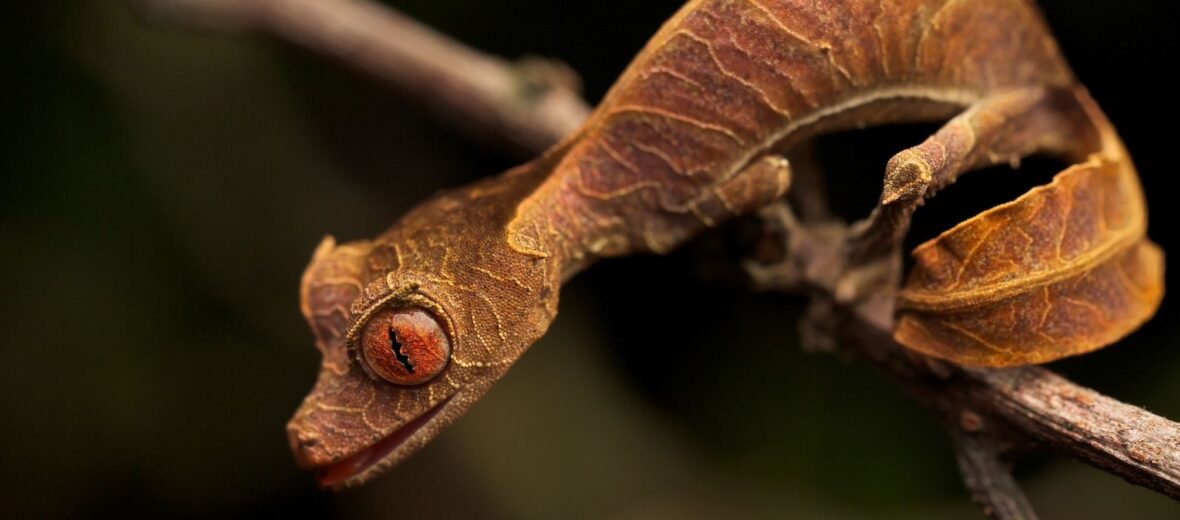
When the satanic leaf-tailed gecko was first discovered in Madagascar, in 1888, George Albert Boulenger described these amazing geckos as “mythical”. The camouflage abilities of these critters is incredible and helps them stay out of the view of predators. Unfortunately, all species of leaf-tailed gecko are threatened by hastened habitat loss, due to deforestation, as well as over collection for the exotic pet trade. Yep. Even though collection is strictly forbidden by law, they are still collected and sold.
First the Stats…
Scientific name: Uroplatus phantasticus
Weight: Up to .31 ounces
Length: Up to 3.5 inches long
Lifespan: Over 10 years
Now on to the Facts!
1.) Due to having no eyelids, these geckos will clean their eyes with their large tongues. Eat your heart out, Gene Simmons.
2.) Like many geckos, they are nocturnal (active at night).
3.) These geckos are strictly arboreal (live in trees and large shrubs).
4.) Their primary prey items consist of insects, arachnids, and even smaller reptiles.
5.) Primary predators include the likes of birds, rats, and larger reptiles.
But wait, there’s more on the satanic leaf-tailed gecko!
6.) Due to their almost flawless camouflage abilities they are able to hide from even the most discerning predator. They can even flatten their bodies to reduce or eliminate any shadows.
7.) Mating season starts at the beginning of the rainy season. Till then, these geckos are solitary.
Did you know…?
Many geckos have tiny microscopic hairs called setae. Each seta splits off into 100s of even smaller bristles called spatulae. These tufts of tiny hairs get so close to the contours in walls and ceilings then the van der Waals force kicks in. This type of physical bond occurs when electrons from the gecko’s hair molecules and electrons from the wall molecules interact with each other and cause an electromagnetic attraction.
8.) Females lay between 2 – 4 eggs hidden within decaying leaf matter or rotting trees.
Now a Short Satanic Leaf-Tailed Gecko Video!
Also, check out the Critter Science YouTube channel. Videos added frequently!
Want to suggest a critter for me to write about? Let me know here.



